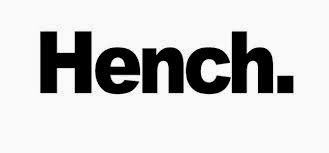Muhammad Ali is considered by many to be the greatest pound for pound boxer of all time. Ali had it all. The 3-time Heavyweight Champ was quick, fast, agile, strong, powerful, and man could he take a hit (as was exemplified in the rope-a-dope against Foreman). Ali is famous for his pre-game hype and pulled off some of the greatest upsets in the history of boxing (downing Liston in the 1st and beating Foreman in Zaire). Ali fought in what many boxing enthusiasts call the toughest boxing era ever. Beating the likes of Frazier twice, Leon Spinks, Ken Norton twice, Floyd Patterson twice, Sonny Liston twice, the dominant George Foreman, Archie Moore, and ultimately compiling a record of 56 wins (37 by knockout) and only 5 losses makes him "The Greatest". Ali was named "Sportsman of the Century" by Sports Illustrated and was ranked the best heavyweight ever by Ring Magazine in 1998 and the 2nd best boxer ever by ESPN.com (only behind 173 win Sugar Ray Robinson).
This is what Ali did to create the most functional physique of all time- strength, power, speed, and stamina. Ali was one of the best fighters that has ever strapped on gloves only because he trained like one of the best. Ali was a hard-working guy and knew that nothing came easy. Yes, he talked a big game, but boy, did he back it up with his effort in the gym and in the ring. Maybe if you follow the routine you too can float like a butterfly and sting like a bee.
Ali started his day off with early morning runs at 5:30 AM. He would stretch beforehand and then would run 6 miles a day in army type-boots in under 40 minutes. Ali made sure he ate a wholesome breakfast- all natural foods, orange juice, and plenty of water. After he ran, he would perform some exercises, stretching, and then go back home to get washed up. Ali then went to the gym at 12:30 PM for 3 hours until 3:30 PM. After the gym, he would get a massage rub down, then get washed up. Then he would talk with the TV people, go out and enjoy himself, and then eat dinner. Ali said in his book, "I always ate good: chicken, steaks, green beans, potatoes, vegetables, fruit, juice and water". After dinner, he would go for a walk and relax by watching TV. Ali made sure he trained 6 days a week with one off day a week where he'd relax and ease his body and mind. As you can see, Ali really went super hard when it came to his training. Training places heavy demands on not only your muscles but also your heart and internal organs. Think about how hard Ali trains in a given day. He does this 6 days a week, only giving himself one day of rest. You should give yourself at least 2 days of rest a week from training to ensure that you aren't overtraining. Ali is a professional athlete and must consistently train to keep his body in top shape. He also needs to stay sharp when it comes to his boxing so 6 days a week worked for him. However, for most people, 4-5 days a week is plenty.
A look below is what Ali did during his training while in the gym for 3 hours. He didn't perform weighted workouts as he felt it would slow him down, yet he had a very ripped physique. This just goes to show you that you can build muscle by doing calisthenic exercises and hitting the heavy bag. As long as there is some sort of resistance being placed on the muscle, your body will grow.
Warm up:
-
side to sides
- torso swivels
- jumping around on toes to limber up
(15 minutes in total)
- torso swivels
- jumping around on toes to limber up
(15 minutes in total)
Shadow boxing:
5 X 3 minutes rounds, working on footwork and speed punching (30 second break in between rounds)
Heavy bag:
6 X 3 minute rounds, working on combinations and stamina (30 second break in between rounds)
The heavy bag works on Ali's explosive punch power.
Sparring: built up sparring as
camp progressed
Floor exercises:
- 15 minutes (300 in total)
- bicycle crunches
- sit ups with medicine ball
- leg raises
Speed Bag:
9 minutes (1 minute break)
9 minutes (1 minute break)
The speed bag helps him achieve those quick jabs.
Skipping:
20 minutes (Ali always moved around while skipping, never staying in the same spot)
20 minutes (Ali always moved around while skipping, never staying in the same spot)
Shadow boxing:
1 minute, walking around with light shadow boxing















.jpg)




